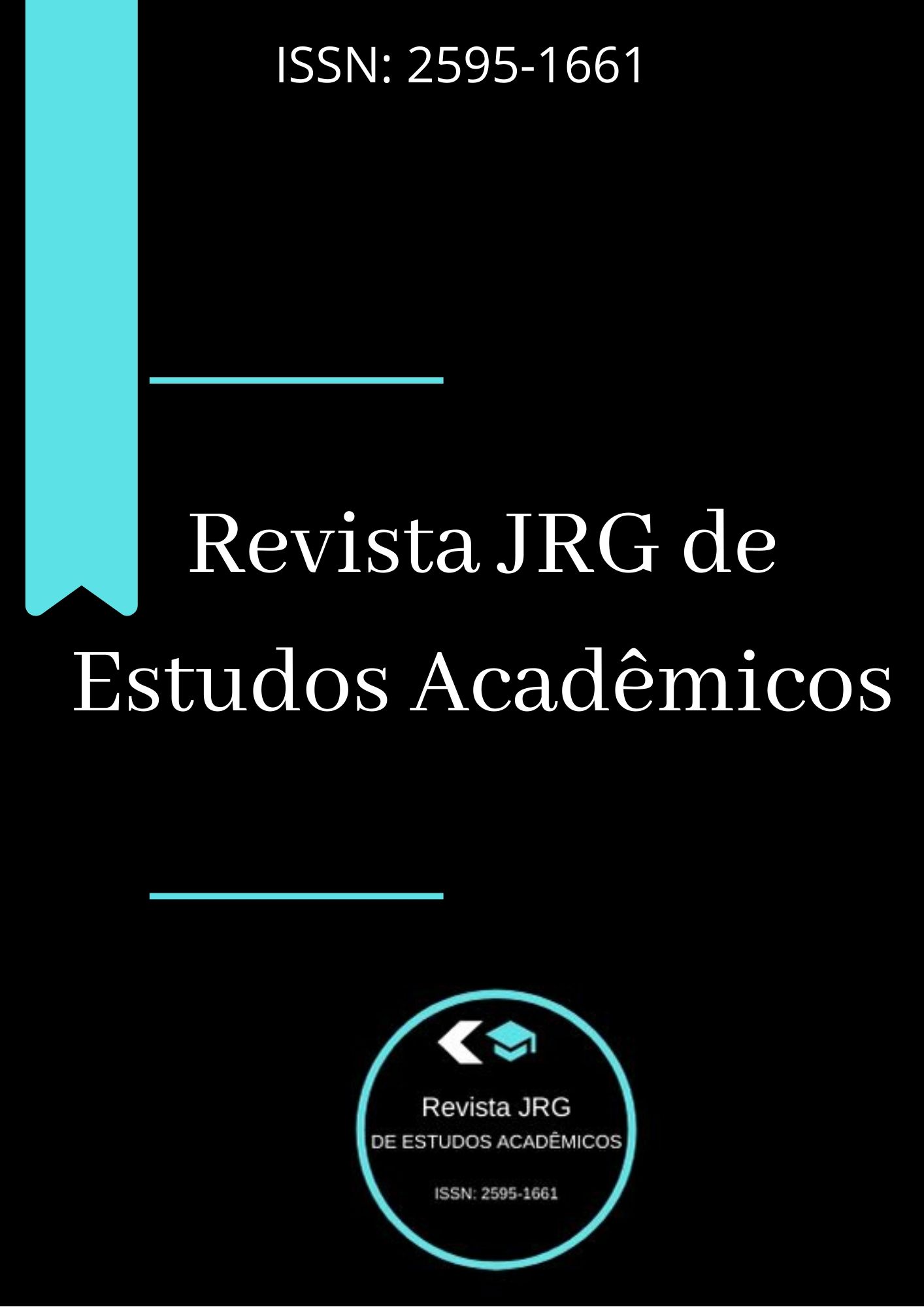PERCEPÇÃO DOS ACADÊMICOS DA FACULDADE FACESA SOBRE AS ESTRATÉGIAS DE PREVENÇÃO AO HUMAN PAPILLOMAVIRUS - HPV MASCULINO: UM ESTUDO COMPARATIVO
DOI:
https://doi.org/10.5281/zenodo.4614172Palavras-chave:
HPV. Masculino. Acadêmicos. Prevenção.Resumo
O presente projeto de pesquisa tem o objetivo de investigar, por meio de um estudo comparativo, a percepção dos acadêmicos do curso de enfermagem e de farmácia sobre as estratégias de prevenção ao Human Papillomavirus - HPV masculino. Trata-se de uma pesquisa aplicada e exploratória sobre o conhecimento do tema do HPV masculino entre estudantes dos cursos de enfermagem e farmácia de uma faculdade de Valparaíso de Goiás-GO, de abordagem quanti-qualitativa por incluir levantamento de dados e análise de percepção, possui ainda características de pesquisa descritiva e explicativa, pois visa compreender o fenômeno social estudado. Aplicou-se o método cientifico hipotético-dedutivo, já que parte da formulação de um problema de pesquisa e hipóteses para obtenção de respostas capazes de solucionar ou propor um modelo aplicável ao fenômeno social analisado. Os resultados foram coletados, por meio do questionário padrão elaborado com esse fim e no período determinado na pesquisa, inicialmente serão selecionados 40 alunos para participar da pesquisa, divididos em quatro grupos, a saber,1º grupo: pelo menos 10 alunos dos semestres iniciais de enfermagem; 2º grupo: pelo menos 10 alunos dos semestres finais do curso de enfermagem; 3º grupo pelo menos 10 alunos dos semestres iniciais do curso de farmácia e. 4º grupo: pelo menos 10 alunos dos semestres finais do curso de farmácia. Os dados foram sistematizados em planilhas para geração de gráficos e tabelas que permitam melhor visualização e comparação, para tanto será utilizado software Excel e a análise foi realizada a partir da comparação entre os dados dos grupos estudados. Na discussão com a mensuração dos dados das entrevistas, conclui-se que percentual de entrevistados que já tiveram doenças sexualmente transmissíveis está entre 22 homens para sim e 18 para não. Um total considerável, durante as entrevistas, 15 dos casos que já tiveram DTS, alegaram que fizeram tratamento médico com profissional. Mostrou também que 35 dos 40 entrevistados praticam ou já praticaram pratica ou praticou sexo sem camisinha 5 entrevistados, usam camisinha, em suas relações sexuais. E nas considerações finais podemos analisar que são necessárias campanhas para alertas da doença, e sem dúvidas para o uso da camisinha, além de muitas outras DSTs (doenças sexualmente transmissíveis), o uso de preservativos nas relações sexuais é a principal forma de prevenir a infecção pelo HPV. No entanto, se houver contato entre áreas genitais masculinas ou femininas não cobertas pelo preservativo, o HPV pode ser transmitido. Outra recomendação seria reduzir os parceiros sexuais e evitar fazer sexo com pessoas com muitos parceiros pode ajudar a reduzir o risco de infecção por HPV.
Downloads
Referências
BRASIL. Ministério da Saúde. Saúde amplia vacina de HPV para meninos de 11 até 15 anos incompletos. Sistema de Informação do PNI/SIPNI/CGPNI/DEVIT/SVS/MS – dados obtidos em 02/06/2019.
BRASIL. Ministério da Saúde. Instituto Nacional de Câncer José Alencar Gomes da Silva.Estimativa 2012: incidência de câncer no Brasil. Rio de Janeiro: INCA; 2011
BRASIL. Ministério da Saúde. Instituto Nacional De Câncer. Câncer do Colo do Útero.Disponível em: http://www.inca.gov.br/conteudoview.asp?id=326.Acesso em 16/06/2019.
BRASIL. Ministério da Saúde. Instituto Nacional De Câncer. Tipos de Câncer: colo do útero Disponível em: http://www2.inca.gov.br/wps/wcm/connect/tiposdecancer/site/home/colo_utero/definição. Acesso em 15/06/2019.
BRASIL. Ministério da Saúde. Secretaria de Atenção à Saúde. Departamento de Atenção Básica. Controle dos cânceres do colo do útero e da mama. Brasília: Ministério da Saúde; 2010. 124 p. (Cadernos de Atenção Básica; n.13); (Série A. Normas e manuais técnicos).
BRASIL. Ministério da Saúde. Secretaria de Atenção à Saúde. Departamento de Atenção Básica. Rastreamento. Brasília: Ministério da Saúde; 2010. 95 p. (Série A. Normas e manuais técnicos. Cadernos de Atenção Primária; n. 29).
CARVALHO MCMP, QUEIROZ ABA. Lesões precursoras do câncer cervicouterino: evolução histórica e subsídios para consulta de enfermagem ginecológica. Esc Anna Nery Rev Enferm. 2010;14(3):617-24.
CERVO AL, BERVIAN PA. Metodologia Científica. 5ª ed. São Paulo: Prentice Hall; 2012.
DEUS, C. A. de. O papel do enfermeiro na prevenção do câncer do colo do útero em unidade básica de saúde com equipe de saúde da família. Universidade Federal de Minas Gerais. Faculdade de Medicina. Núcleo de Educação em Saúde Coletiva . Uberaba, 2011. 30f. Monografia (Especialização em Atenção Básica em Saúde da Família).
INSTITUTO NACIONAL DE CÂNCER (Brasil). Ações de enfermagem para o controle do câncer: uma proposta de integração ensino-serviço. 3a ed. rev., atual. e ampl. Rio de Janeiro: INCA; 2008. 628 p.
INSTITUTO NACIONAL DE CÂNCER (Brasil). Câncer no Brasil: dados dos registros de base populacional, vol. IV. Rio de Janeiro: INCA; 2010. 487 p.
LIMA, T.C.S; MIOTO, R.C.T. Procedimentos metodológicos na construção do conhecimento científico: a pesquisa bibliográfica. Revista Katálysis, Florianópolis, v. 10, n. spe. p.37-45, 2007.
MELO MCSC. Mulheres em risco familiar para o câncer de mama: uma hermenêutica da prevenção secundária [tese]. Rio de Janeiro: Universidade Federal do Rio Janeiro, Escola de Enfermagem Anna Nery; 2009.
MELO, M C S C DE; VILELA, F.; SALIMENA, A M DE O; SOUZA, I E DE O. O Enfermeiro na Prevenção do Câncer do Colo do Útero: o Cotidiano da Atenção Primária. Revista Brasileira de Cancerologia 2012; 58(3): 389-398.
QUEVEDO, Josemari Poerschke; WIECZORKIEVICZ, Adriana Moro; INVERNIZZI, Noela. A política de vacinação contra o HPV no Brasil: a comunicação pública oficial e midiática face à emergência de controvérsias. Disponível em: <https://periodicos.utfpr.edu.br/rts>. R. Tecnol. Soc., Curitiba, v. 12, n. 24, p. 1-26, jan./abr. 2016.
SALVADOR, Ângelo, Domingos. Métodos e técnicas de pesquisa bibliográfica, elaboração e relatório de estudos científicos. 5. ed. rev.aum. Porto Alegre, Sulina/2010.
SANTOS ML, MORENO MS, PEREIRA VM. Exame de Papanicolaou: qualidade do esfregaço realizado por alunos de enfermagem. Rev bras cancerol. 2009;55(1):19-25.
SANTOS, Iris Mattos; MAIORAL, Mariana Franzoni; HAAS, Patrícia. Infecção por HPV em homens: Importância na transmissão, tratamento e prevenção do vírus. Rev. Estud Biol. 2010/2011 jan/dez;32/33(76-81):111-18.
SILVA ALJ, SILVA EL, SILVA MA et. al. O ENFERMEIRO DO PSF E A PREVENÇÃO DO CÂNCER DO COLO DO ÚTERO. Rev. de Pesq.: cuidado é fundamental Online 2010. jan/mar. 2(1):704-717. Disponível em: http://www.seer.unirio.br/index.php/cuidadofundamental/article/viewFile/438/pdf>. Acesso em 20/06/2019.
BORZATTO, A. Z, ET. al. Vacina contra o HPV e a Prevenção do Câncer do Colo do Útero: Subsídios para a Prática. 24/1/11.
BRAGAGNOLO, A.L.; ELI, D; HAAS, P. Papiloma vírus humano (HPV). RBAC, vol. 42(2): 91-96, 2010
CARVALHO, J.J.M; et al. Câncer de pênis em jovem de 23 anos associado a infecção por HPV 62- relato de caso. DST-J doenças sex transm; 23(1): 44-47; 2011
ENCINA, G.M; ALVES,C.S.R. Papiloma vírus Humano (HPV): sua relação com câncer de colo Uterino. 2008.
INSTITUTO NACIONAL DO CANCER (INCA). HPV e câncer: perguntas mais freqüente. 2013. Disponível em www1. inca.gov.br/impressao.asp?op=cv&id=2687. Acessado em 20 de junho de 2019.
MARTINS, A.L.L. M; et al. Acesso a vacina para Papilomavirus humano no sistema único de saúde. Brasil, 2012.
Downloads
Publicado
Como Citar
Edição
Seção
Licença

Este trabalho está licenciado sob uma licença Creative Commons Attribution 4.0 International License.










































